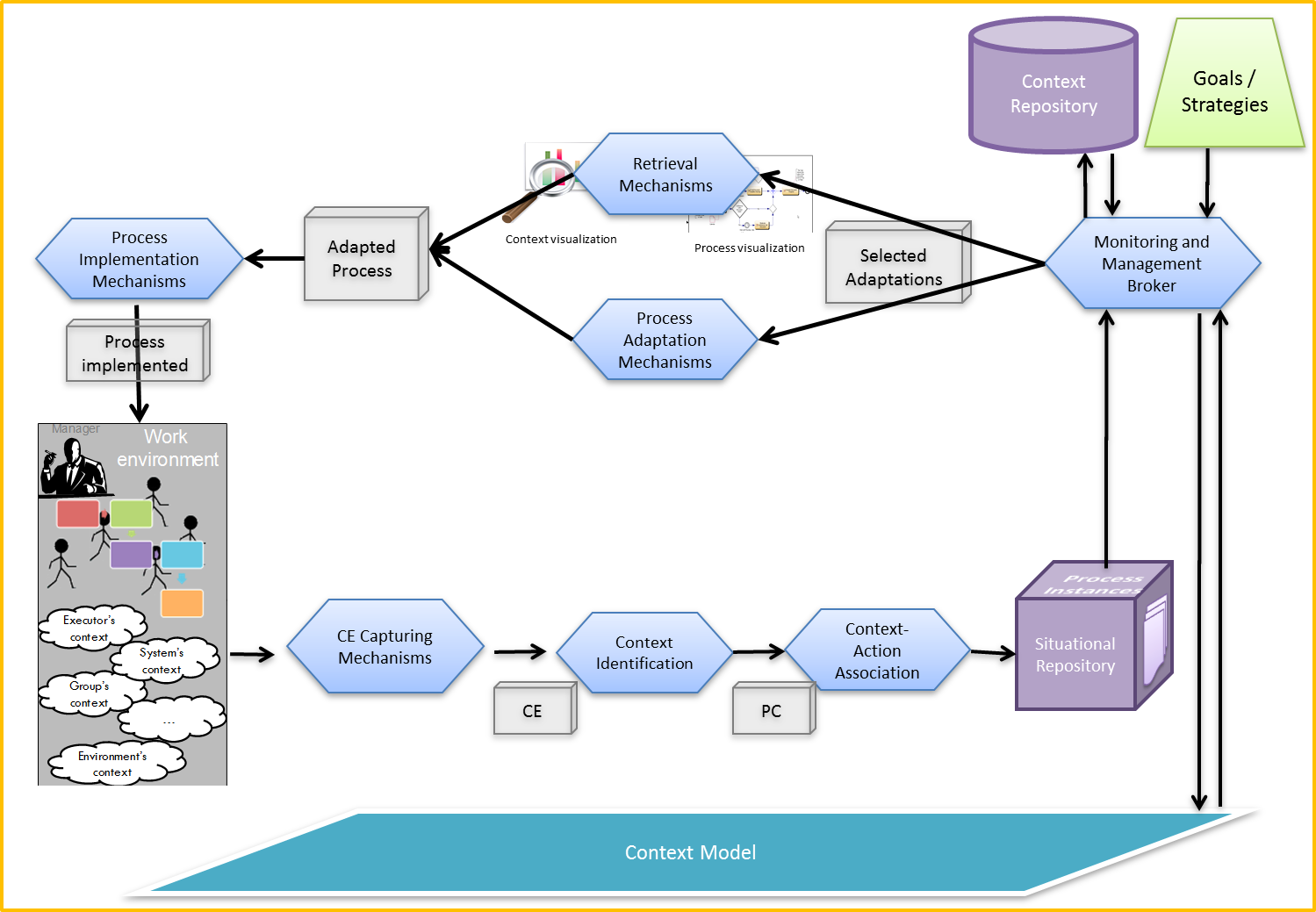Context Management (CM)
The motivation for the increasing importance in associating context to business processes is related to the fact that it provides a strong cause-effect relationship between the demands for processes flexibility and the impacts on processes adaptation.
The figure below presents a model for the cycle of capture, storage, reasoning, and retrieval of context, focusing on dynamic adaptation process.

The model incorporates five aspects of Context Management in the support of dynamic process adaptation that are explained in general terms:
- Identification and representation of contextual elements
- Capture of contextual elements;
- Identification, representation and storage of context information;
- Monitoring and process adaptation management; and
- Presentation and implementation of process adaptation
Identification and representation of contextual elements
The context management is supported by a "Context Layered Conceptual Model", which represents all the information that is manipulated and are relevant to be monitored during processes execution in a given domain.
Capture of contextual elements
Manually, semi or fully automated, the "CE capturing mechanisms" collect contextual elements (data), according to the configuration of each mechanism. For example, a sensor that identifies the existence of five people in the same room.
Identification, representation and storage of context information
One or more situations may be identified from the combination of contextual elements values and associated to a specific moment during the process execution. An example of the identification of a situation is the conduction of a meeting by combining information about the number of people present, where these people are and the noise level of the location.
Monitoring and process adaptation management
It consists of mechanisms capable of:
- Identifying changes in the context of the process instance, suggesting relevant adaptations based on demands and process goals;
- Identifying evolution (creation, change and exclusion) of contextual elements and Situations based on evolution of process rules, constraints, politics and goals;
- Identifying evolution (creation, change and exclusion) of contextual elements and Situations based on executed processes instances and respective results.
Presentation and implementation of process adaptation
For each identified adaptation, automatic mechanisms can implement it in the running process via "Process Implementation Mechanisms". Recovery mechanisms may also notify those responsible for executing the process, suggesting relevant adaptations to the presented situation ("Recovery Mechanisms), through visualization mechanisms.
